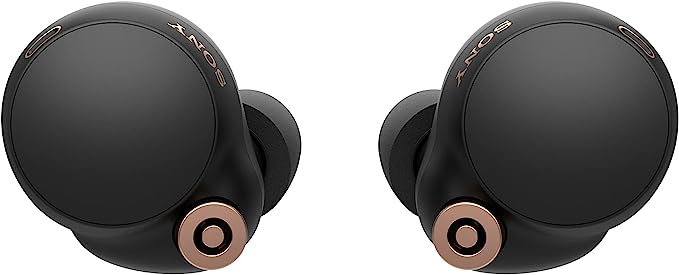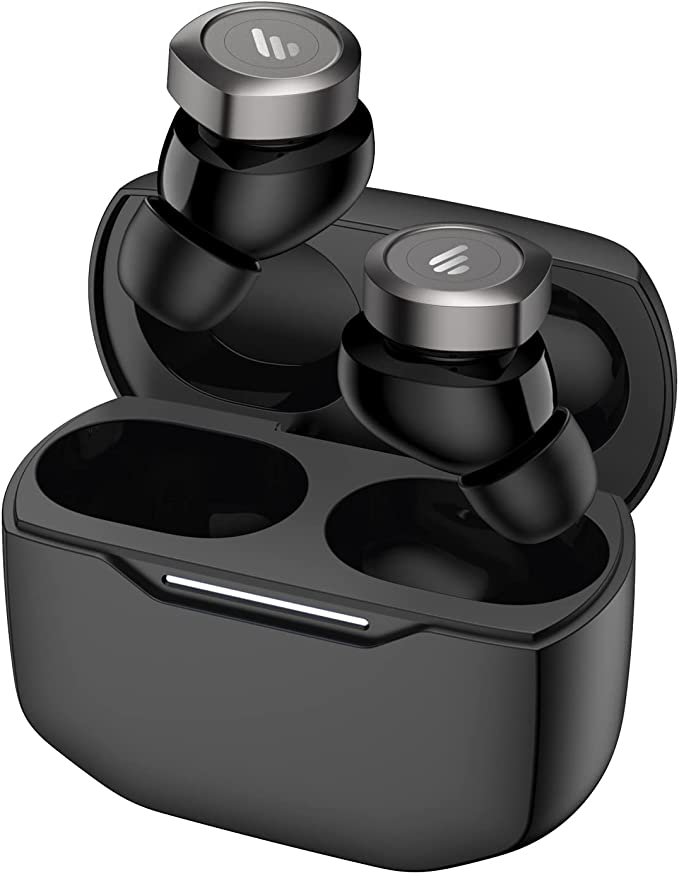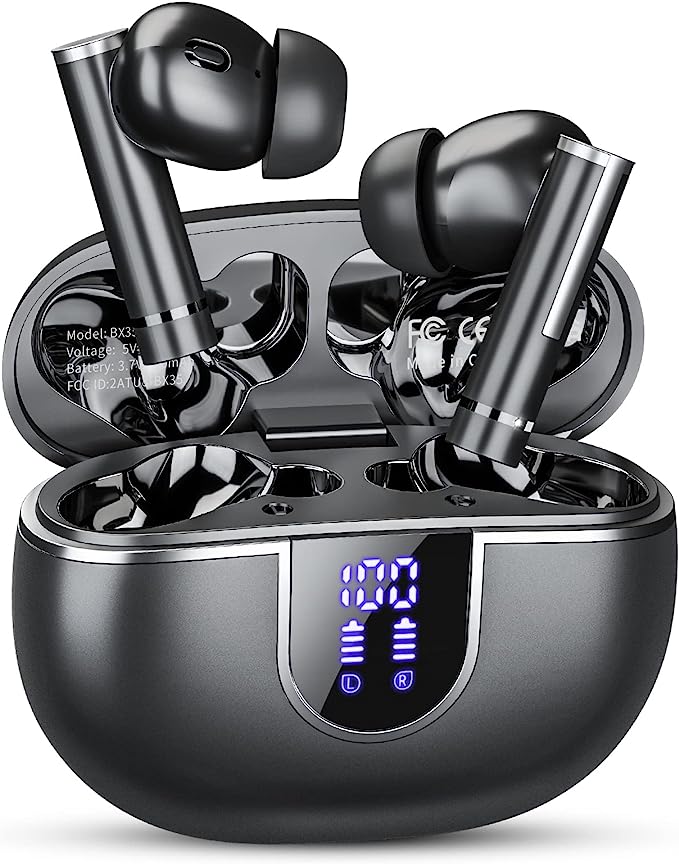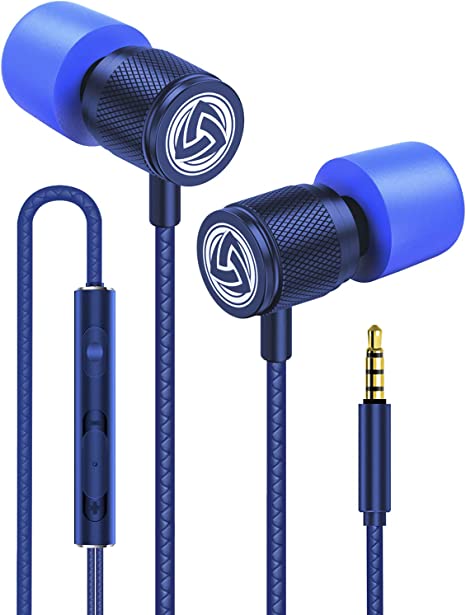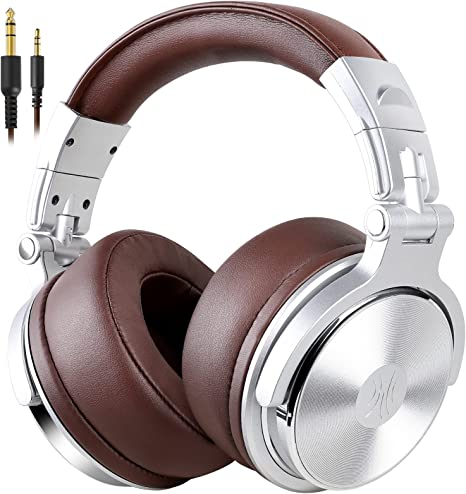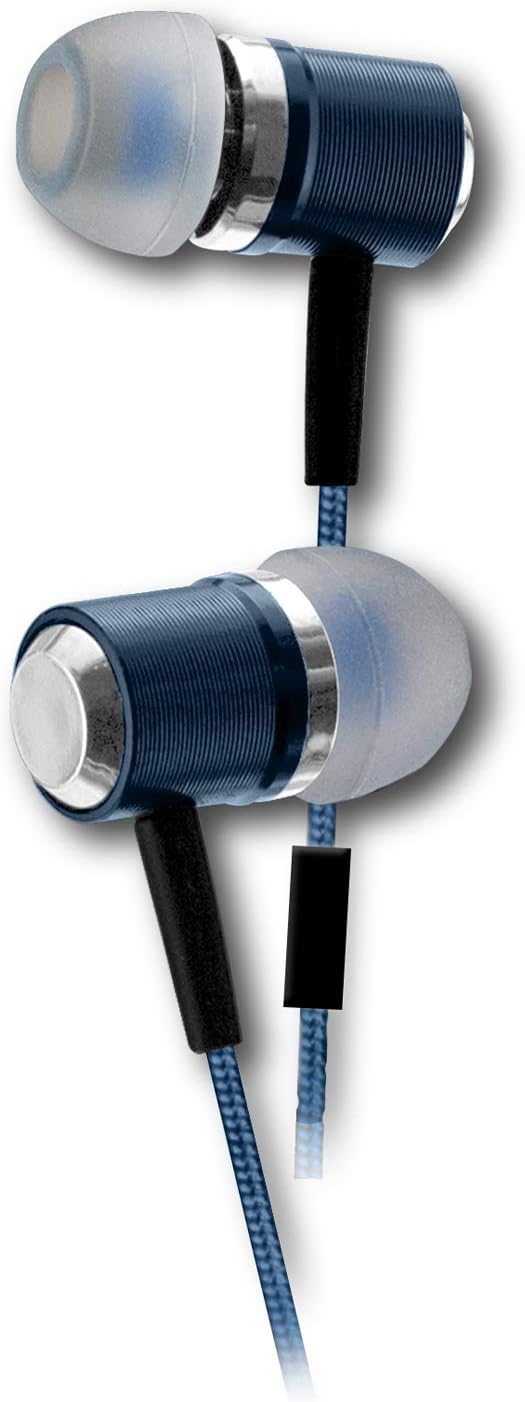FiiO FH1s In Ear Wired Earphones: A Budget Audiophile's Dream Come True
Update on June 20, 2025, 6:27 a.m.
Ever paused to wonder how those diminutive earpieces nestled in your ears can conjure such vast, intricate soundscapes? It’s a kind of everyday magic, transforming simple electrical signals into immersive musical experiences. The journey of sound through these tiny marvels is a fascinating tale of applied physics, material science, and meticulous engineering. Today, we’ll use the FiiO FH1s In-Ear Monitors (IEMs) not as a product to be reviewed, but as a lens through which we can explore the elegant science that crafts the audio we cherish. Prepare to embark on an enlightening journey, uncovering the unseen orchestra that plays just for you.
At the heart of any great audio transducer lies the mechanism for converting electricity into audible vibrations. The FiiO FH1s employs a sophisticated “hybrid” approach, essentially housing a miniature, specialized speaker system within each earpiece, where different components are tasked with handling distinct parts of the musical spectrum. This isn’t just about making noise; it’s about faithfully reproducing the entirety of a performance, from the deepest rumbles to the most delicate whispers.

The Hybrid Heart: A Duet of Drivers for Full-Spectrum Sound
Imagine an orchestra, where different instruments excel at different ranges of notes. IEMs like the FH1s adopt a similar philosophy by using multiple, specialized “drivers.”
First, let’s meet the powerhouse, the veritable “bass drum” of this internal ensemble: the 13.6mm Dynamic Driver. In the realm of audio physics, dynamic drivers operate much like traditional loudspeakers, shrunk down. A voice coil attached to a diaphragm (in this case, a flexible yet robust polymer material) sits within a magnetic field. When an audio signal – an electrical current – flows through the coil, it creates a fluctuating magnetic force that causes the diaphragm to vibrate. The larger the diaphragm, like the 13.6mm one in the FH1s, the more air it can move with each vibration. This ability to displace significant air volume is paramount for generating those deep, impactful low frequencies that give music its weight and foundation. FiiO describes the result as “robust bass” that is “textured, deeply extended, quick, yet robust bass that sounds extremely natural.” The choice of polymer for the diaphragm is also critical, aiming for a balance of lightness (for quick response) and rigidity (to avoid distortion), allowing it to pulse with precision and deliver bass that you can not only hear but also feel.
Complementing this master of the low-end is the maestro of detail: the Knowles Balanced Armature (BA) driver, specifically a custom Knowles 33518 unit in the FH1s. Think of this as the “violins and flutes” of our miniature orchestra, responsible for the clarity and nuance in the midrange and high frequencies. Balanced armatures work on a different principle. A tiny reed, or “armature,” is precisely balanced between two magnets and surrounded by a coil. The audio signal energizes this coil, causing the armature to pivot minutely. This micro-movement is then transferred, often via a tiny drive rod, to a very small, stiff diaphragm. Because the moving parts are so minuscule and lightweight, BA drivers can respond with incredible speed and accuracy, excelling at reproducing intricate details, the breathiness in a vocal, or the shimmer of a cymbal. FiiO highlights that their custom Knowles unit “reduces unwanted resonances and gives the higher frequencies a sense of realism and tactility you can really feel.” This precision is key to articulating complex musical passages and delivering a sense of air and definition.
But having two different types of drivers is only half the story. How do they work together without creating an auditory muddle? This is where the unseen art of acoustic crossovers comes into play. While the FH1s product description mentions being “precisely designed according to acoustics…crossovers,” the general principle is crucial. A crossover network acts like an orchestral conductor, directing specific frequency ranges to the driver best equipped to handle them. Low frequencies are channeled to the dynamic driver, while midrange and high frequencies are sent to the balanced armature. This careful division of labor prevents either driver from being strained by frequencies it’s not designed for, resulting in a cleaner, more coherent, and “classic balanced sound” across the entire audible spectrum. It’s this harmonious collaboration that allows the IEM to present a complete and engaging sonic picture.

The Lifeline of Sound: Cables and the Quest for Signal Purity
The journey of the audio signal from your device to the drivers is critically dependent on the quality of the pathway – the cable. It’s far more than just a couple of copper strands. The FiiO FH1s utilizes a detachable cable made of High purity monocrystalline Litz wires, a choice rooted in solid electrical engineering principles.
Let’s break down “High purity monocrystalline Litz.” “High purity” and “monocrystalline” copper refer to the quality of the copper itself. Standard copper wire consists of many tiny crystal grains. Each boundary between these grains can act as a minuscule impediment to the flow of electrons, potentially causing slight signal degradation or distortion. Monocrystalline copper, on the other hand, is processed to have very long, continuous crystal structures, meaning fewer of these boundaries. This allows for a smoother, less obstructed path for the audio signal.
The term “Litz” refers to the construction of the wire. It’s not a single solid conductor, but rather many very thin strands of wire, each individually insulated and then braided or twisted together – the FH1s cable boasts 120 such individual Litz wires. This design addresses a phenomenon known as the “skin effect.” At higher audio frequencies, electrical current tends to concentrate on the outer surface (the “skin”) of a conductor. In a solid wire, this can effectively reduce the usable cross-sectional area for high frequencies, increasing resistance and potentially dulling the treble. Litz construction, by forcing the current to be distributed more evenly among the many insulated strands, mitigates this skin effect, ensuring that delicate high-frequency information is transmitted with greater fidelity. FiiO claims this leads to “better audio transmission performance under the naturally-occurring yet adverse skin effect,” resulting in “improved bass and mids, as well as more coherency between all audio frequencies.” Think of it as transforming a congested single-lane road into a pristine, multi-lane superhighway, allowing all parts of the audio signal to travel unimpeded.
This carefully engineered cable connects to the earpieces via industry-standard 0.78mm 2-pin connectors. This detachable system not only enhances durability (a damaged cable can be easily replaced) but also opens the door for audiophiles who enjoy experimenting with different cable materials and constructions for subtle tuning – a testament to the cable’s importance in the audio chain.

Crafting the Concert Hall: Acoustic Design of the Shell
The earpiece housing itself, the “shell,” is more than just a container for the drivers; it’s a miniature acoustic environment that plays a subtle yet significant role in shaping the final sound.
The FiiO FH1s features shells crafted from multiple layers of celluloid, which, as FiiO notes, results in “a slightly different looking pattern for each unit, giving each FH1s its own custom look.” While this offers a unique aesthetic appeal, the choice of material and the internal geometry of any earphone shell can influence sound. Different materials have varying densities and damping characteristics, which can affect how sound waves reflect and resonate within the enclosure. Ideally, the shell should be acoustically inert enough not to introduce unwanted colorations to the sound produced by the drivers.
Perhaps more critically from a scientific standpoint is FiiO’s implementation of Dynamic airflow balance technology. This addresses a specific challenge related to dynamic drivers. As the large diaphragm of the dynamic driver moves back and forth to produce sound (especially powerful bass notes), it displaces air. In a perfectly sealed enclosure, this can create pressure imbalances – either too much pressure building up behind the diaphragm or a partial vacuum in front. This can impede the diaphragm’s free movement, leading to distortion, a phenomenon sometimes called “driver flex,” or a “congested” sound. Dynamic airflow balance technology likely involves precisely engineered vents or internal pathways within the shell that allow for controlled pressure equalization. This ensures the dynamic driver can “breathe” properly, moving as intended without being hampered by air pressure issues. The result, as FiiO describes, is “a pure, clean, effortless sound especially at lower frequencies, for greatly enhanced soundstage and overall sound quality.” It’s like ensuring our miniature “bass drum” has adequate room and ventilation to resonate fully and cleanly, contributing to a more open and spacious perceived soundstage.

Beyond What We Hear: The Nuance of Hi-Res Audio
The FiiO FH1s is certified by the Japan Audio Society to be capable of bringing you “Hi-Res Audio.” But what does this certification truly signify, especially when it often involves reproducing frequencies that may be beyond the typical range of human hearing?
Generally, Hi-Res Audio certification implies that a device can handle audio signals with a wider frequency response and/or greater dynamic range than that of a standard Compact Disc (CD-quality audio is typically 16-bit/44.1kHz). For headphones, this often means the ability to reproduce frequencies up to 40kHz. The average human hearing range extends to about 20kHz, and this limit tends to decrease with age. So, why bother with frequencies we might not consciously “hear”?
The science here touches on the complexities of perception. While you might not perceive a pure 40kHz tone as a distinct sound, the argument is that these ultrasonic frequencies, or the harmonics and overtones of audible sounds that extend into this range, can contribute to the overall realism and texture of the music. The accurate reproduction of these ultra-high frequencies can influence the timbre (the characteristic quality of a sound) and the perceived “airiness” or spatial cues in a recording. Think of it like the difference between standard-definition and high-definition video. Even if you can’t consciously distinguish every single extra pixel in an HD image, the overall picture appears sharper, more detailed, and more lifelike. Similarly, the capacity to reproduce this extended frequency range aims to capture more of the original sonic information, providing what FiiO calls “quality far beyond those of CDs” and contributing to a more immersive and nuanced listening experience.
Effortless Enjoyment: The Science of Drivability
All this sophisticated technology would be less impactful if the earphones were difficult to power. This brings us to the concept of impedance, a measure of electrical resistance, rated at a user-friendly 26 Ohms for the FH1s. In practical terms for headphones, a lower impedance generally means they require less voltage from the audio source to reach a given volume level.
Many high-end audiophile headphones have high impedances and demand powerful, dedicated headphone amplifiers to perform optimally. However, an impedance of 26 Ohms makes the FH1s relatively easy to “drive.” This means that even standard audio outputs on devices like smartphones, laptops, or portable music players can provide sufficient power for the FH1s to deliver good volume and their intended sound quality. As FiiO states, “Even ordinary phones allow you to fully enjoy the FH1s’ warm, yet transparent nature.” This accessibility is a key aspect of their design, allowing a wider audience to experience the benefits of their internal audio science without needing to invest in additional specialized equipment.
Conclusion: The Exquisite Science Behind Your Soundtrack
The journey through the FiiO FH1s reveals an intricate symphony of scientific principles at play. From the carefully orchestrated duet of hybrid drivers, each mastering its designated frequency range, to the material science ensuring signal purity through advanced Litz cabling; from the acoustic considerations in shell design and airflow management to the pursuit of capturing every nuance with Hi-Res Audio capabilities – every element is a testament to the relentless human endeavor to reproduce sound with ever-increasing fidelity and emotional impact.
Understanding this interplay of physics, electrical engineering, and material science doesn’t just demystify the technology; it deepens our appreciation for the artistry involved in crafting such miniature acoustic marvels. It’s a reminder that behind every captivating musical experience delivered through a pair of quality earphones lies a wealth of scientific innovation, all working in concert to bring the magic of sound closer to our ears. So, the next time you plug in and lose yourself in your favorite tunes, remember the unseen orchestra and the exquisite science that makes your personal soundtrack possible.


